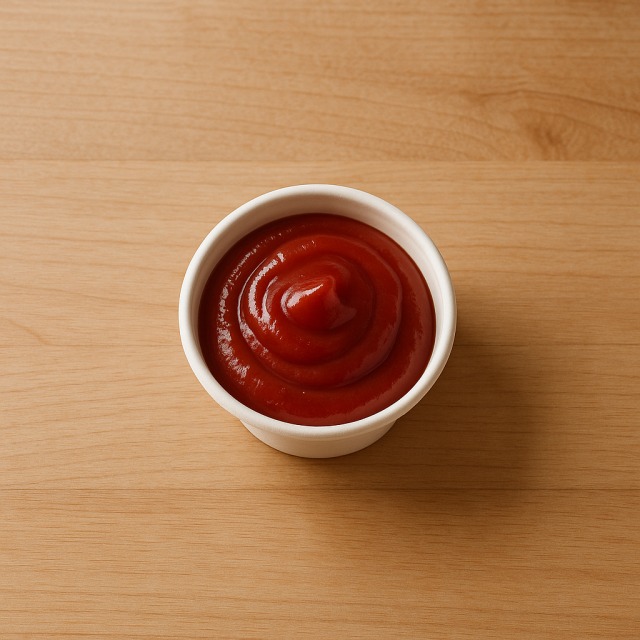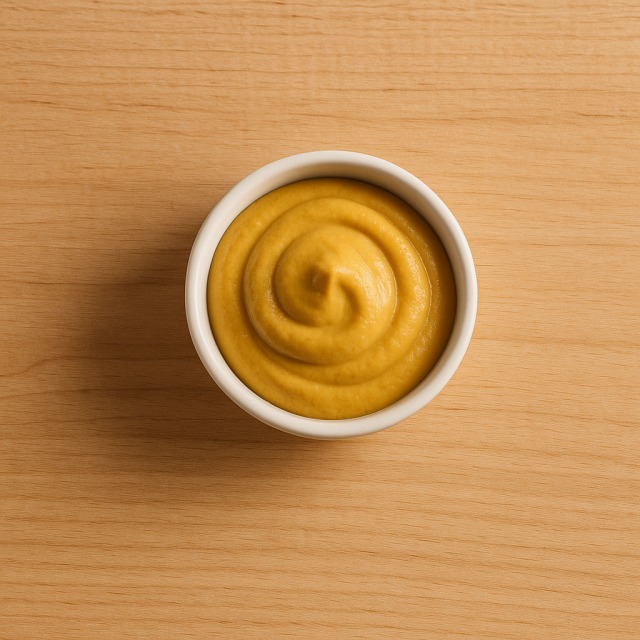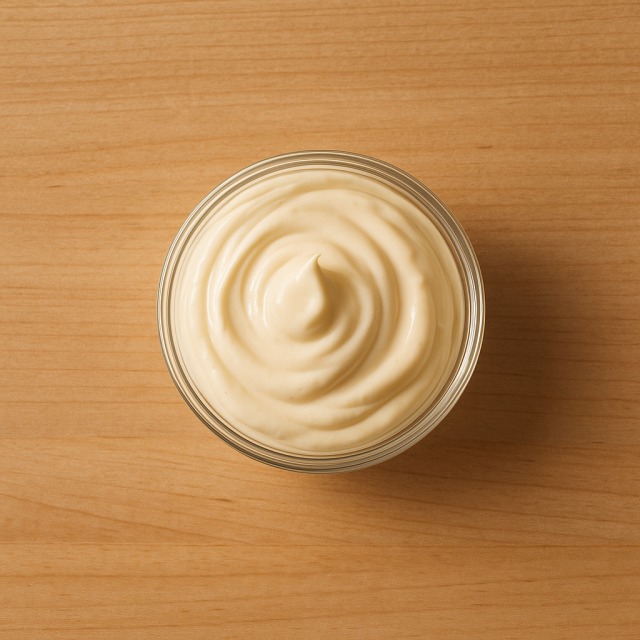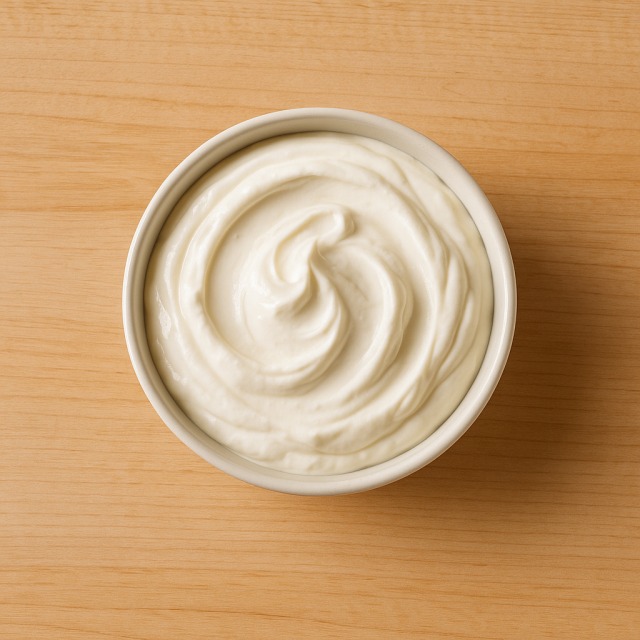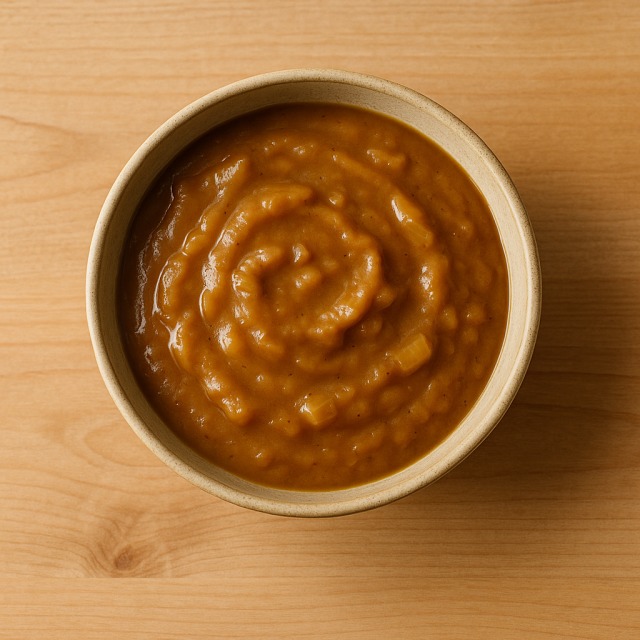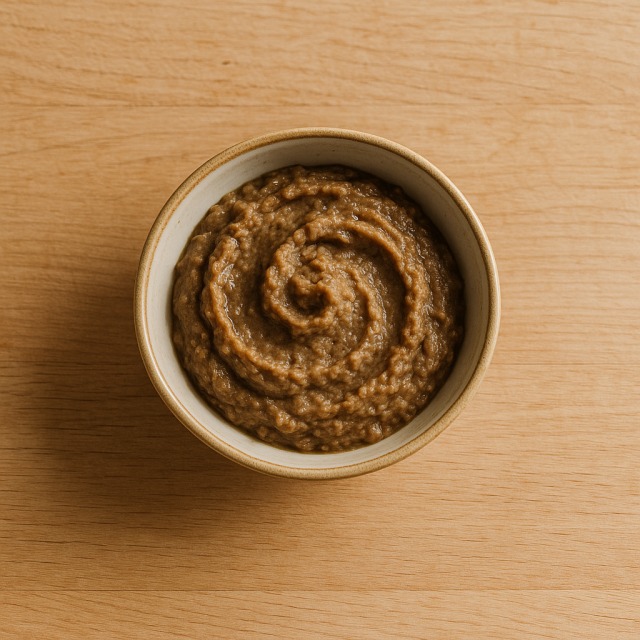Calorie Chart / Seasoning & Sauces / Mayonnaise
How Many Calories Are in Mayonnaise?
Calculation of the nutritional value & Recommended Dietary Intake of mayonnaise
For g and a calorie requirement of kcal
| Calories 107 kcal | Proteins 0.2 g | Lipids 12 g | Carbohydrates 0.1 g |
| 5% | 0% | 18% | 0% |
Health benefits of mayonnaise
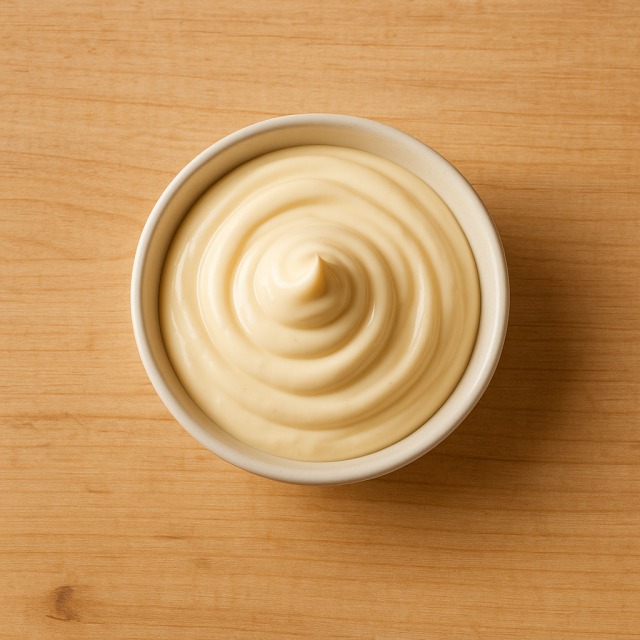
Mayonnaise - 100g
Calories 710 kcal
Proteins 1.3 g
Lipids 78 g
Carbohydrates 0.7 g
With 710 kcal per 100 g, mayonnaise is clearly a high-calorie condiment; mentioning calories at the outset helps readers immediately understand its energy density. Despite its rich calorie profile, the emulsified blend of egg yolk and vegetable oil delivers useful nutrients. It supplies vitamin E (antioxidant protection of cell membranes), vitamin K (blood clotting and bone health), and choline, a compound essential for nerve function and liver metabolism.
The oil phase—often rapeseed, sunflower, or soybean—provides unsaturated fats, including omega-3 and omega-6, which can support cardiovascular health when eaten in moderation. The fat content means the calories are concentrated, but those fats also enhance the absorption of fat-soluble vitamins (A, D, E, K) from the rest of the meal. In small servings, this calorie-dense sauce can therefore act as a carrier for micronutrients.
Historically, mayonnaise is thought to have originated in Mahón (Menorca) before spreading through French cuisine in the 18th century. This culinary heritage explains why calories did not worry early gourmets, yet the recipe has hardly changed: egg yolk, oil, an acid (vinegar or lemon), and seasoning. Knowing the history adds context to the high-calorie status that modern nutrition highlights today.
Tips for incorporating mayonnaise into a balanced diet
Because mayonnaise packs many calories, portion control is key: one tablespoon (about 15 g) delivers roughly 100 kcal. Dilute half-and-half with yogurt or whisk in a spoonful of mustard to keep flavor while trimming calories. Using it as a thin spread instead of a thick layer can save significant calories throughout the week.
For balanced plates, combine a modest spoon of mayonnaise with protein-rich foods such as sliced chicken breast, flaked tuna, or hard-boiled egg. Add plenty of raw vegetables—think crunchy carrots or cucumber—to increase volume without excess calories.
Classic ideas that respect calorie goals: a light potato salad where half the sauce is replaced by yogurt; a crab roll dressed with lemon-zested mayonnaise and a side of arugula; or deviled eggs where half the yolk filling is mashed with puréed avocado to lower calories per bite. Remember, flavor intensity lets you use less sauce and still enjoy the dish.
Frequently Asked Questions
- How many calories are in mayonnaise?
- There are 710 kcal per 100 g.
- Is light mayonnaise really lower in calories?
- Yes. Light mayonnaise typically provides 300–450 kcal per 100 g, cutting calories by about half compared with regular mayonnaise.
- How can I cut calories when using mayonnaise in a sandwich?
- Spread a thin layer, mix it with Greek yogurt, or add mustard; these tricks reduce total calories without sacrificing creaminess.
- Does mayonnaise offer nutrients other than calories?
- Besides its calorie contribution, it supplies vitamin E, vitamin K, choline, and unsaturated fats.
- Can homemade mayonnaise have fewer calories?
- If you replace part of the oil with puréed cottage cheese or yogurt and beat well, you can lower overall calories by 20–30%.
Similar foods
Information provided by Calorie Menu may contain inaccuracies or errors. It cannot, under any circumstances, substitute medical advice or medication.
